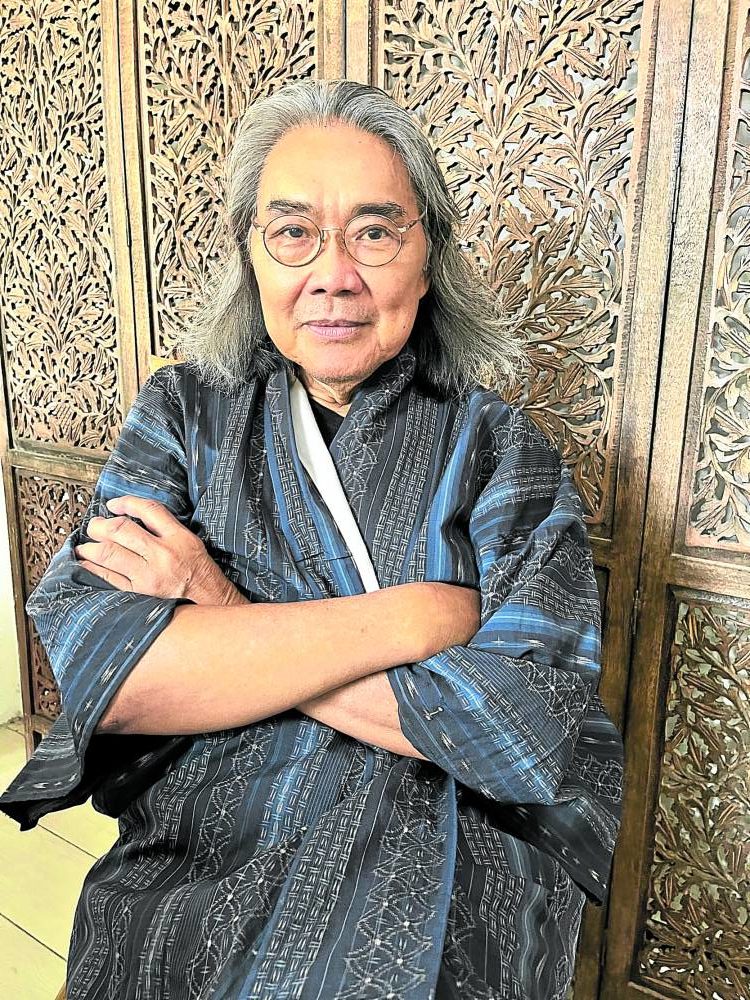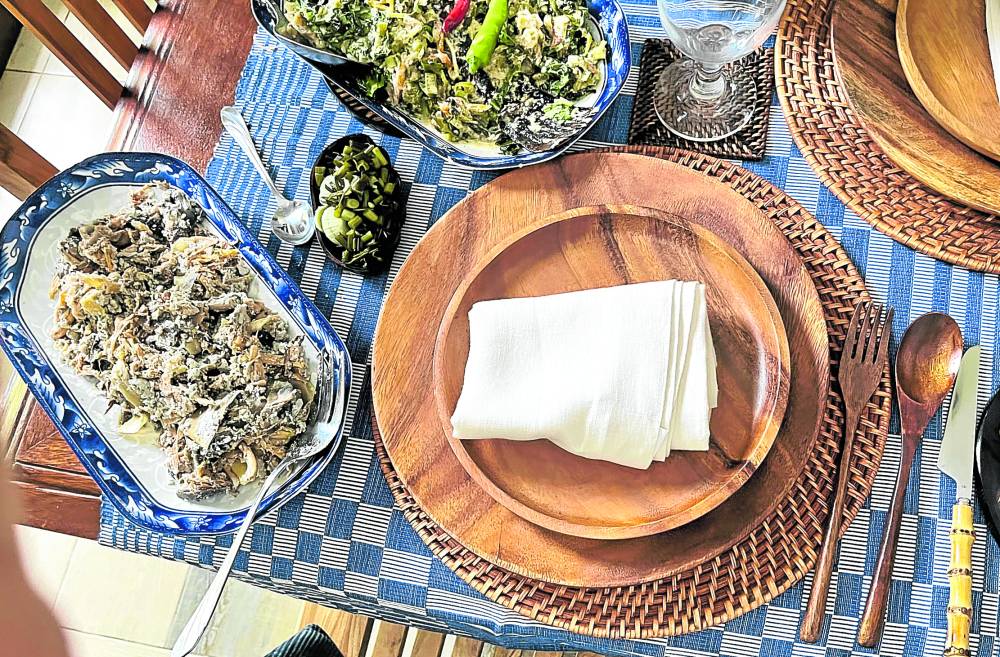
When theater director Alexander Cortez entertains at home, he writes down in detail the menu and table setting as if he were making notes for a play. Whether he’s talking about the culinary traditions of his hometown, San Pablo, Laguna, or serving a meal, you will always get a delicious overload of factoids and local fare.
“I grew up in an environment of fun, food and fiestas,” said Cortez, former Dulaang UP artistic director and retired University of the Philippines (UP) professor.
Since childhood, he was taught to appreciate food, whether it was golden, organic lanzones from the farm, ube halaya during fiestas, imported canned goods and chocolates from a retired Navy man or lamb from Canlubang.
His hospitality as reflected in the lavish spread has lured the likes of Irene Marcos Araneta, director Chito Roño, designer Chito Antonio, restaurateur Ana Lorenzana de Ocampo, entrepreneur Ruby Roa, celebrity hairdresser Teng Roma, scenographer Gino Gonzales, et al.
Crusty ‘pan de sal’
His dishes told us a lot about how the San Pableños ate in the mid-20th century when food was abundant and of good quality.

For breakfast, we dunked rounded suman cooked with coconut milk in a bowl of native chocolate from Cagayan de Oro. The drink was sweetened with organic honey from designer Patis Tesoro’s garden.
The piece de resistance was the crusty pan de sal from Los Filipinos, one of the oldest bakeries in San Pablo, founded by Cortez’s parents Juan and Feliciana. It’s the go-to place for the best Pinoy breads wherein the recipes are known only to their panaderos (bakers). The bakers’ backs are turned when making the dough so that nobody would discover their techniques.
“When the baker leaves, the bread tastes different,” said Cortez. The preservative-free breads keep for a week without refrigeration.
Affluent San Pableños and fiesta patrons would send their maids in uniform to the Cortez bakery to have the lechon baked in the orno, the kiln, which exists to this day. Better than shortening, the oil drippings from the pig added richness and flavor to the pan de sal dough. The bakery is also known for its hopia and ensaymanda. Tycoon Gregorio “Greggy” Araneta III and Irene ’s grandchildren are fans of the jacobina and favorita biscuits.
During the hard lockdowns, the barangay captain requested that the bakery remain open, offering such staples as Spanish bread, cheese rolls, pan de coco, monay, putok and kalihim.
Pig in the furnace
Our lunch was a feast of classic Laguna cuisine. Capitalizing on the abundance of coconuts, the signature dish, kulawo, is based on the technique wherein the coconut threads are grilled over charcoal for a smoky flavor and squeezed for the cream. It is cooked with chargrilled eggplant or banana blossoms. Traditionally, it is flavored with aromatics such as onions and ginger, and enhanced with dried fish such as tulisang pugot (triggerfish), biya (round goby) or dilis (anchovy).
The lechon liempo (roasted pork belly) with a grilled liver sauce is served on special occasions. “The Lagunenses like their pork with sauces. We use grilled pork liver sauce which is sweet and sour and gooey,” added Cortez.
“The San Pablo lechon is comprised of the head of the pork—face and neck. When cooked in the pugon (furnace), the crispiness is different. The bakers have to time it, so they know when to put it in and take it out of the pugon so that it doesn’t burn. The flooring of the pugon is salt which maintains the heat and adds flavor. It’s baked similar to the Italian way. We use madre de cacao (tropical hardwood) or mango wood for the fire.”
Since San Pablo is known as the City of Seven Lakes, fish will always be highlighted. The tulingan, the Philippine mackerel, was cooked in pork fat and dried kamias (bilimbi). The staple, grilled tilapia, was wrapped in mustard leaves and long green chillies enriched with bitter gourd, radish, beet root with basil in honey and local vinegar marinade.
Our host enhanced the wagwag, lowland rice, with the aromatic, soft and slightly sticky dinorado rice.
The fresh lumpia was a recipe from Cortez’s mother. The wrapper was a soft and spongy pancake filled with fresh heart of palm strips. The original recipe included shrimps, bean curd and water chestnuts for crunch. On special occasions, Feliciana used lapu-lapu for the filling.
Farm food
We sweetened our palates with authentic macapuno, syrupy coconut balls, made from mutant coconuts that held little water but were filled with thickened but softer meat.
In a phone interview, Cortez said he forgot to serve the baby shrimps from the lake. “When the rivers were clean, the baby shrimps were sweet and fresh that they could be eaten right away with calamansi and young coconut. We get our shrimps from Quezon today because our lakes are polluted,” he said.
These shrimps make a perfect topping for crostinis. They are sautéed in garlic and coconut cream and again with coconut milk and red chilli.
Our host reminisced about the food from the farm, such as the paksiw ng Laguna (vinegared fish and vegetables cooked in banana leaves), binayong hipon (ground baby shrimps in coconut milk) and kalamay (sticky rice cake), the latter of which he said is becoming a lost art.
The Laguna humba, braised pork, is more austere with banana flowers, boiled peanuts and salted black beans. “We put less accoutrements to highlight the meat,” he explained.
The dining experience at Cortez’s place isn’t just an epicurean adventure and a reminiscence of happier times. Every main ingredient or dish has a narrative that reminds us to appreciate and preserve our cultural traditions, to protect endangered ingredients such as native glutinous rice and biya, and to promote food security. —CONTRIBUTED

